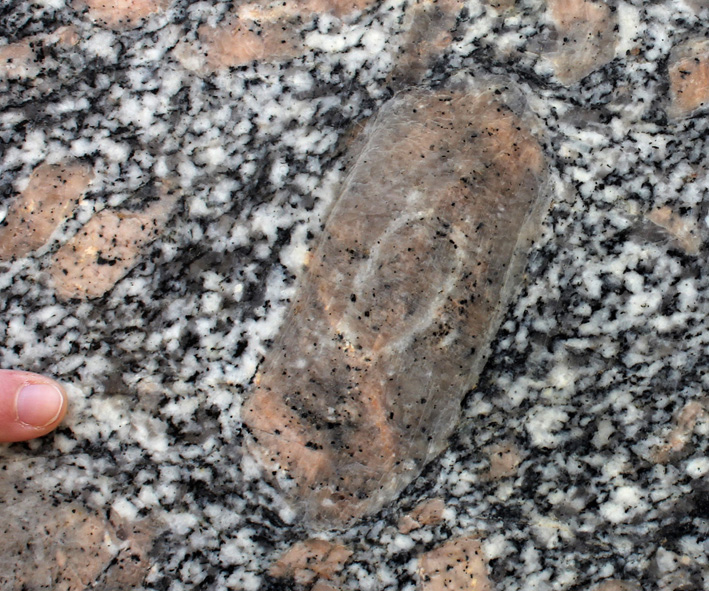
|
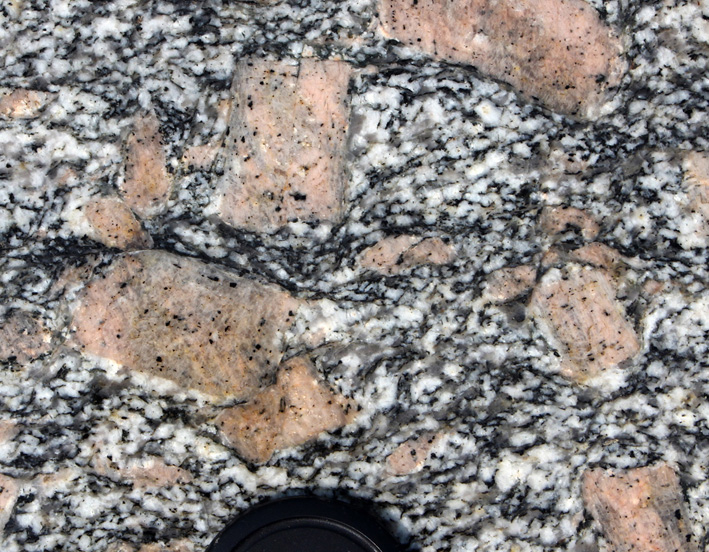
|
a) Zoned K-feldspar megacryst wrapped by a faintly foliated matrix.
|
b) Sigma-shaped K-feldspar megacryst with asymmetric tails of felsic granite. Note megacryst in the middle right-hand-side has rotated and is surrounded by a sigma-shaped matrix. Top to the right movement sense. |
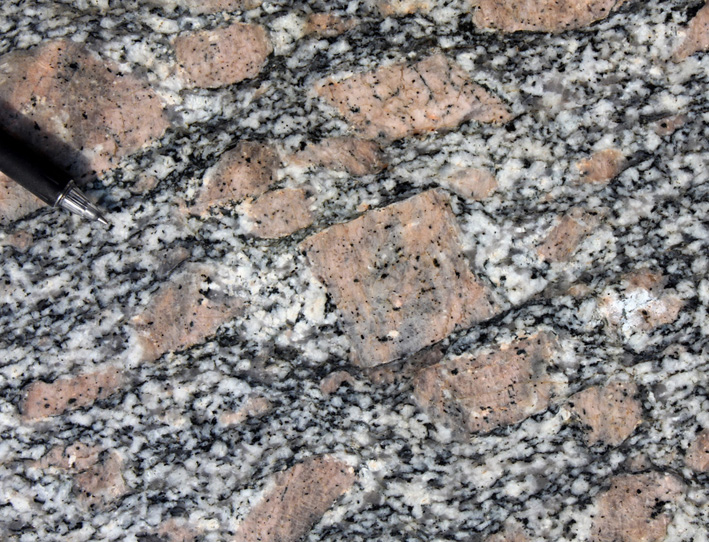
|
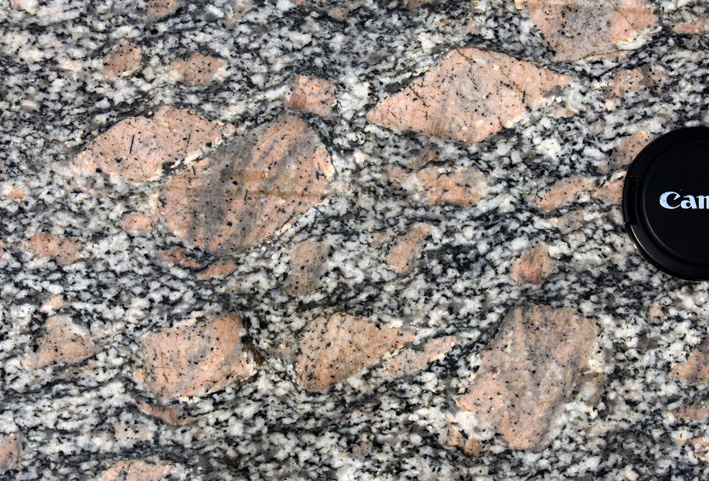
|
| c) Sigma-shaped K-feldspar megacryst with tails of felsic granite. Three K-feldspar crystals in the central part are linked by a felsic matrix band indicative of extension between crystals during solidification and seggregation of magma into the necks. Asymmetry of individual crystals and of the combined object indicates top-to-right movement sense.
|
d) Sigma-shaped K-feldspar megacryst with tails of felsic granite, asymmetry indicates top-to-right movement sense.
|
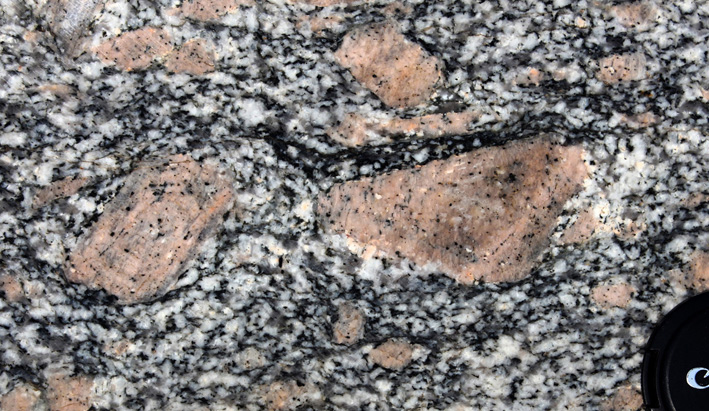
|
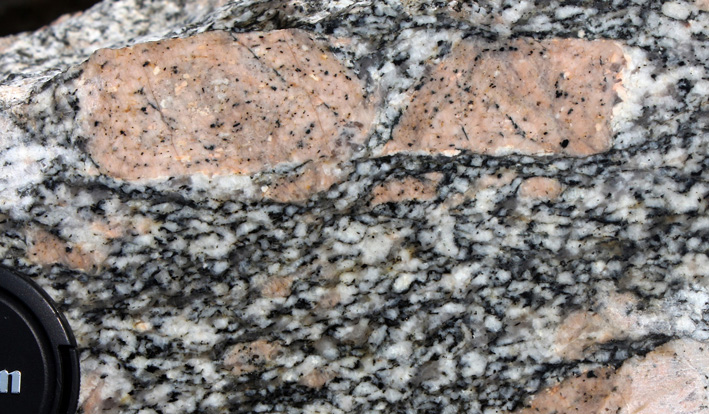
|
e) Sigma-shaped K-feldspar megacryst with tails of felsic granite. Note mafic-rich band on the side of the megacryst parallel to the main foliations plane. Top-to-right movement sense.
|
f) Two K-feldspar megacrysts with felsic granite tails, the grain on the right rotated slightly in relation to the one on the left. Note broken piece of megacryst on the left=hand-side. Matrix defines two foliations and individual grains are sigma-shaped. Top-to-right movement sense.
|
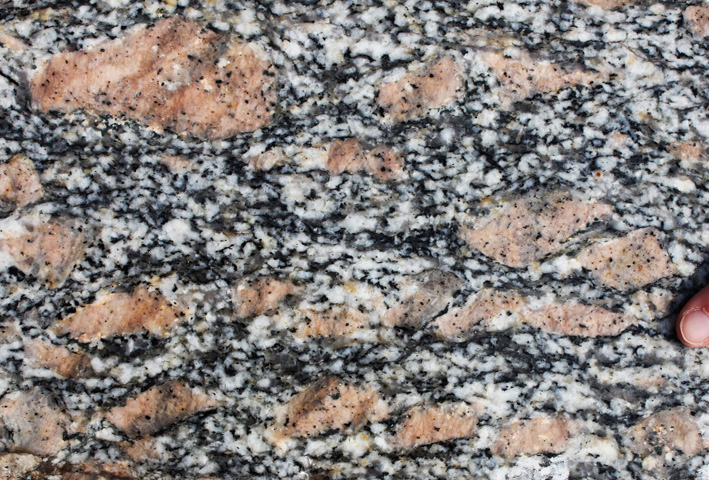
|
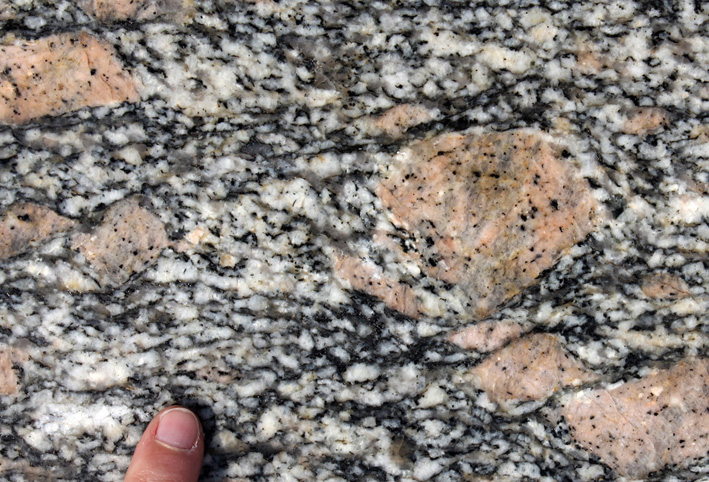
|
g) Tiled and deformed K-feldspar sigma clasts (with length parallel to S-plane), indicative of top-to-right movement sense.
Megacryst in the upper right has been broken and fracture was filled with magma indicating syn-magmatic fracturing. Note darker and lighter bands throughout the rock,
|
h) Like (g), central grain has been broken and fracture was filled with magma indicating syn-magmatic fracturing. Note the bands richer in mafic minerals deflecting above and below the central, fractured crystal, and bands of more felsic granite in the shadows of the megacrysts also indicative of syn-magmatic deformation.
|
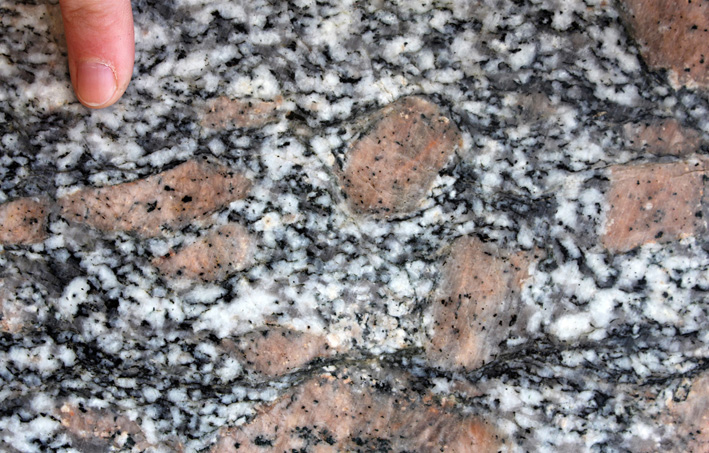
|
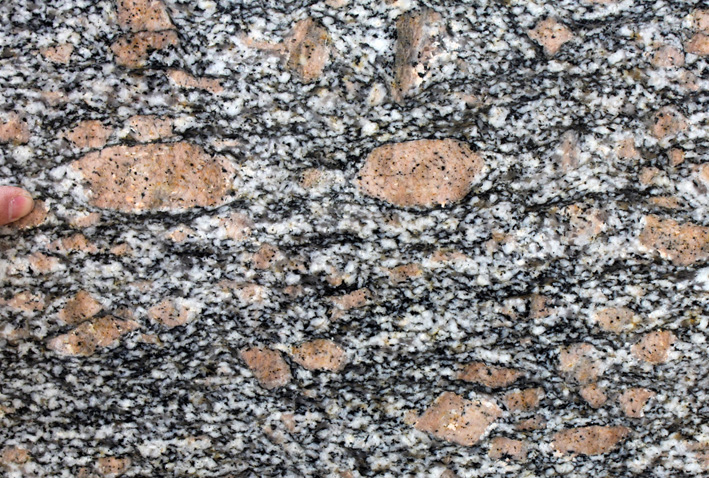
|
i) Rotated and deformed K-feldspar sigma clasts (with length parallel to S-plane), indicative of top-to-right movement sense.
Note darker and lighter bands throughout the rock.
|
j) Typical general appearance of flow banding: felsic bands are associated with aligned K-feldspar megacrysts, mafic bands develop in between.
|
